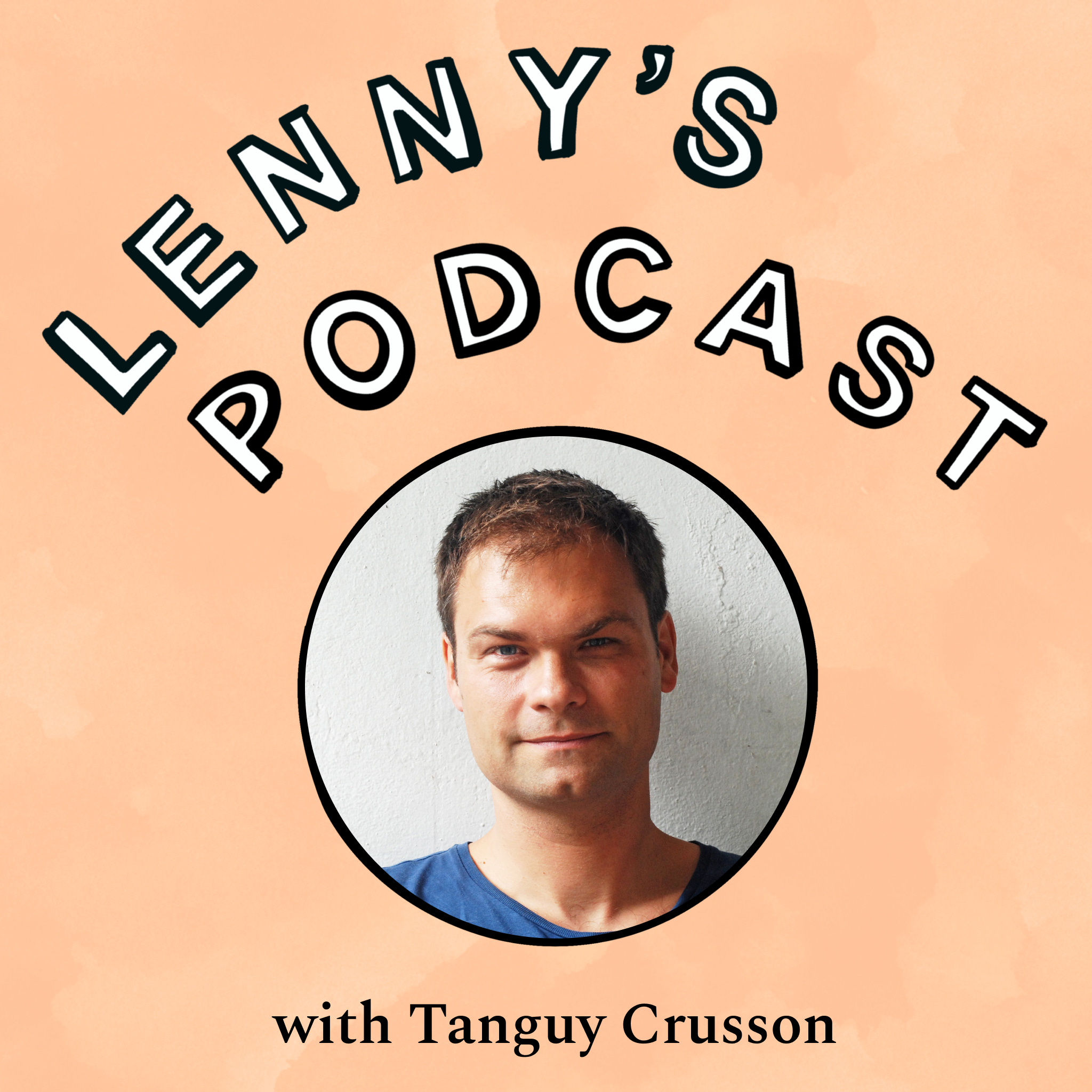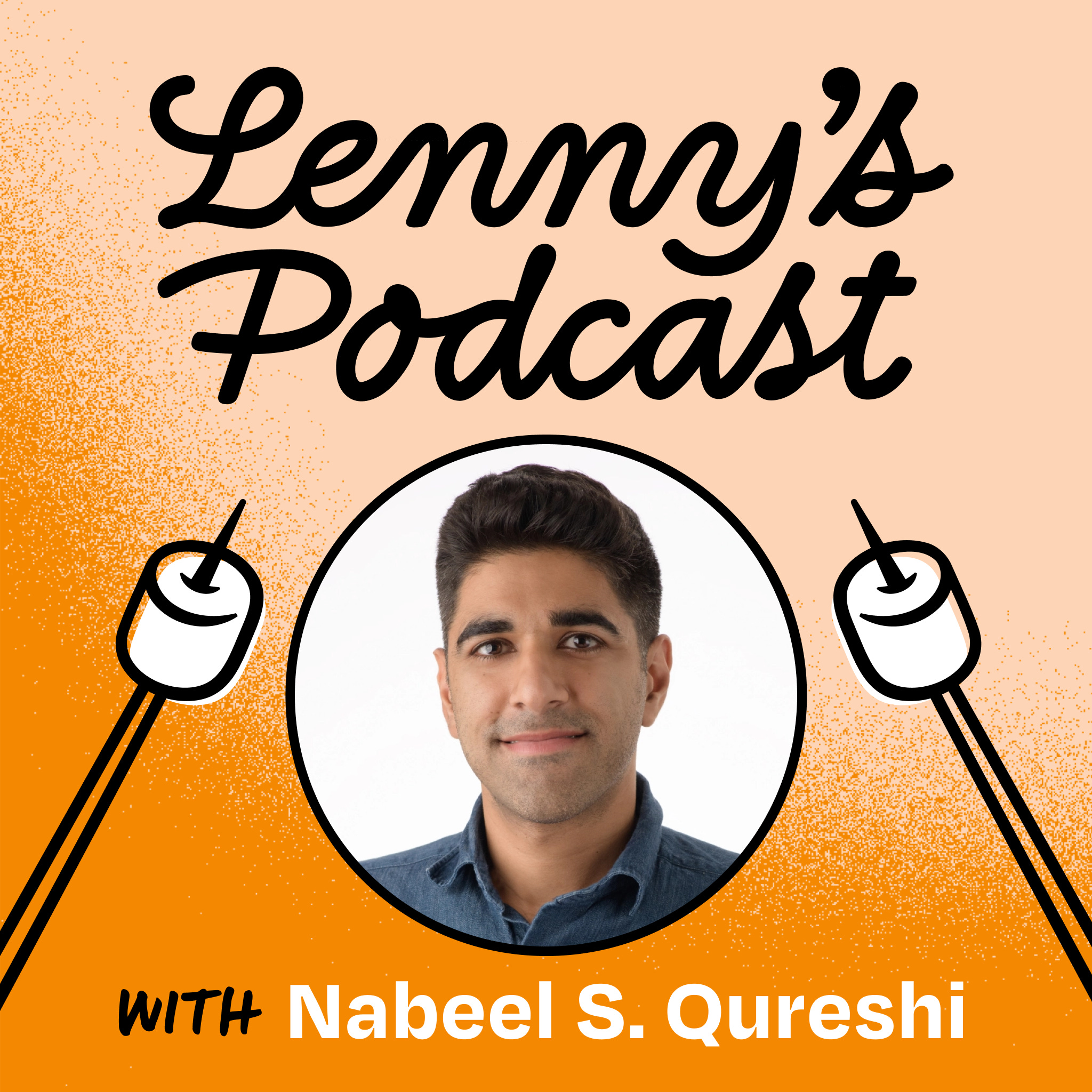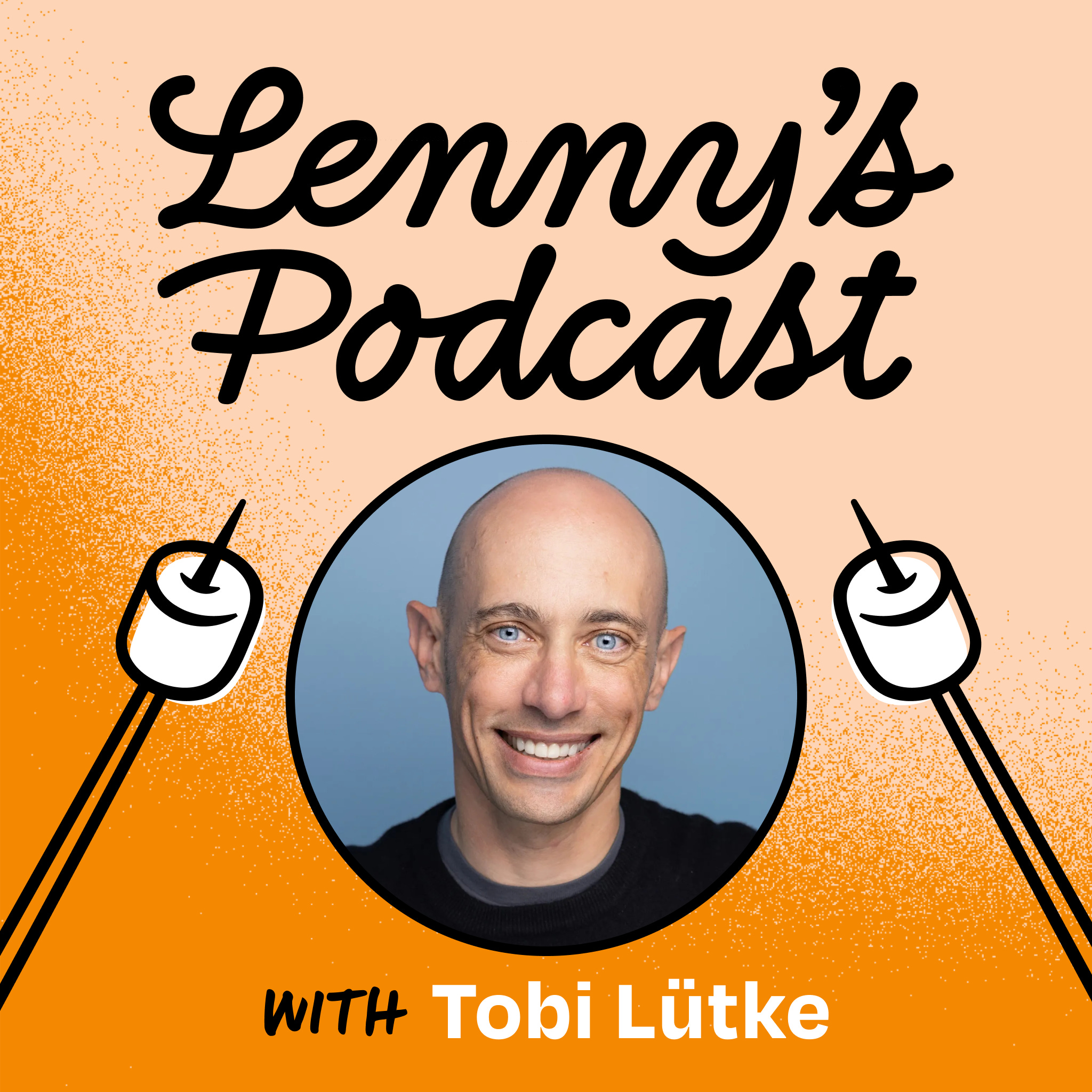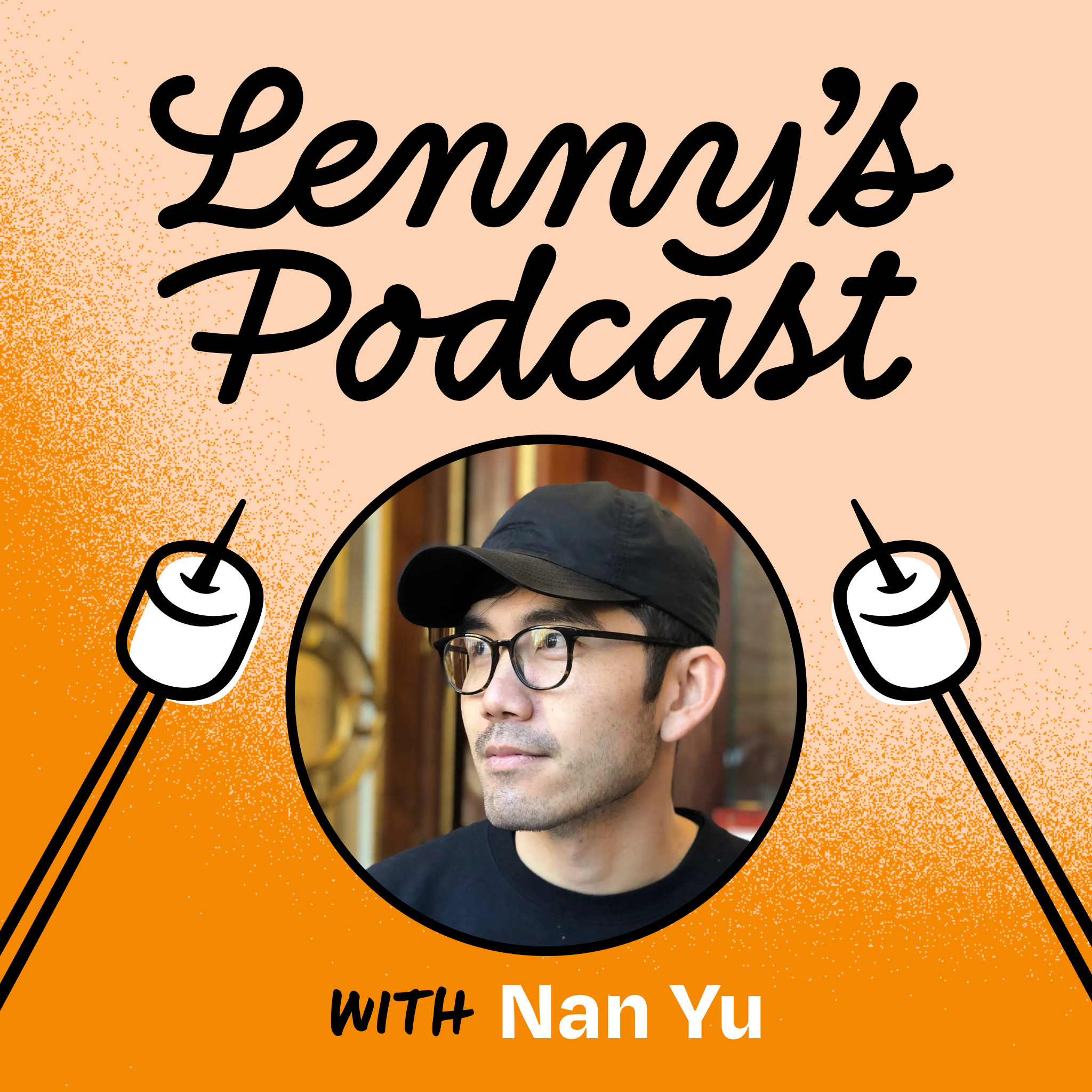
June 16, 2024 • 1hr 54min
Hard-won lessons building 0 to 1 inside Atlassian | Tanguy Crusson (Head of Jira Product Discovery)
Lenny's Podcast: Product | Growth | Career

Key Takeaways
- Innovation is challenging in large companies due to high expectations, established processes, and risk aversion. Startups have the "benefit of starving" which creates urgency and focus.
- Protect new ideas by framing them as likely to fail. This creates space to experiment without over-committing resources or raising expectations too high too soon.
- Use a "lighthouse users" program to work closely with a small number of customers (10-100) in early stages before scaling. This allows for rapid iteration and deep customer empathy.
- Break rules without breaking trust. New initiatives often need to operate differently, but maintain transparency and alignment on goals.
- Communicate progress constantly through demos, customer stories, and bite-sized updates to build momentum and support.
- Balance innovation with personal wellbeing. Push for change, but in an environment that is receptive and supportive.
Introduction
In this episode, Lenny interviews Tanguy Crusson, product lead for Jira Product Discovery at Atlassian. Tanguy has over 10 years of experience at Atlassian working on new product initiatives like HipChat, Statuspage, and Jira Product Discovery. He shares candid stories and lessons learned about the challenges of innovating and building new products (going from "0 to 1") inside a large, established company like Atlassian.
Topics Discussed
Challenges of Innovating in Large Companies (7:03)
Tanguy explains that while large companies like Atlassian have many advantages when it comes to launching new products (existing customer base, resources, brand recognition), there are also significant challenges:
- High expectations for new products to quickly reach significant scale ($100M+ businesses)
- Established processes and metrics that don't work well for early-stage initiatives
- Risk aversion and desire to protect existing successful products
- Difficulty creating urgency and focus compared to resource-constrained startups
He notes: "Startups have the benefit of starving and so you need to create scarcity. Like, what we try to do is remind everyone things are gonna fail. Let's not drag the rest of the company into it."
The HipChat Story: Successes, Failures and Lessons Learned (12:58)
Tanguy shares the story of HipChat, an early team chat product acquired by Atlassian that ultimately failed to compete with Slack:
- HipChat was successful early on with startups and tech teams
- Atlassian tried to scale it rapidly to compete with Slack's growth
- They rewrote the product (as Stride) which took too long
- Ultimately exited the market by selling HipChat/Stride to Slack
Key lessons:
- Don't underestimate challenges of new market segments - HipChat was strong with tech teams but struggled to appeal to business users like Slack did
- Avoid "competitive myopia" - Reacting to competitors rather than focusing on users
- Be cautious about rewrites - They often take longer than expected and lose momentum
Statuspage: A Journey of Perseverance (33:49)
Tanguy discusses Atlassian's acquisition of Statuspage, a product for communicating system status and incidents:
- Initially struggled to integrate Statuspage into Atlassian
- Culture shock for startup team joining large company
- Challenges aligning processes, decision-making, etc.
- Eventually became very successful, but took time
Key lessons on acquisitions:
- Integration is mostly about people, not technology
- Expect an initial slowdown before acceleration
- Treat it like hiring a team, not just buying a product
The Success and Pain of Launching Jira Product Discovery (55:40)
Tanguy shares the story of launching Jira Product Discovery, one of Atlassian's most successful new products:
- Part of Atlassian's "Point A" internal incubator program
- Took 3 years from first line of code to general availability
- Now has 8,000+ customers, one of fastest growing Atlassian products
Key success factors:
- Framed as likely to fail to create space to experiment
- Used "lighthouse users" program to iterate with small group of customers
- Broke rules (e.g. hiring) without breaking trust
- Constant communication of progress
Atlassian's Four-Phase Approach to Launching New Products (1:04:15)
Tanguy explains Atlassian's "Point A" incubator program structure:
- Wonder - Prove problem/market exists
- Explore - Validate potential solutions
- Make - Build and iterate (alpha, beta)
- Impact - Launch and scale
He notes this structure helps set expectations and align stakeholders throughout the process.
The Lighthouse Users Program (1:23:17)
Tanguy describes their approach of working closely with a small number of "lighthouse users" in early stages:
- Start with 10 users, expand to 100, then 1000
- Entire team (PM, eng, design) meets regularly with users
- Creates deep empathy and rapid feedback loops
- Avoids premature scaling before product is ready
He emphasizes: "We are indeed biased, that we are indeed reacting based on feelings like wanting to help or not wanting to help, or reacting strongly to what you've seen. But we are embracing that to try and build the best product possible."
Protecting and Nurturing New Ideas (1:30:00)
Tanguy shares advice on how to protect early-stage "ugly baby" ideas:
- Constant communication of progress and learnings
- Use data, demos, and customer stories
- Create sense of momentum and velocity
- Frame as learning and exploration, not immediate results
He notes: "No one wants to f**k with a high speed train. You don't get in front of it, that doesn't help, and you're going to look bad by doing that."
Balancing Innovation with Personal Wellbeing (1:36:14)
Tanguy emphasizes the importance of finding the right environment:
- Push for change, but in receptive environments
- Be willing to change companies if needed
- Surround yourself with people who bring out your best
He advises: "Have the courage to ask yourselves those questions, because otherwise you can, it might change you in ways you don't want to."
Conclusion
Tanguy's experiences at Atlassian provide valuable insights into the challenges and best practices for innovating within large organizations. Key themes include creating space to experiment, working closely with small groups of users, communicating progress constantly, and balancing pushing for change with finding supportive environments. His stories highlight that while large companies have many advantages, successfully launching new products requires intentional approaches to overcome organizational inertia and risk aversion.









